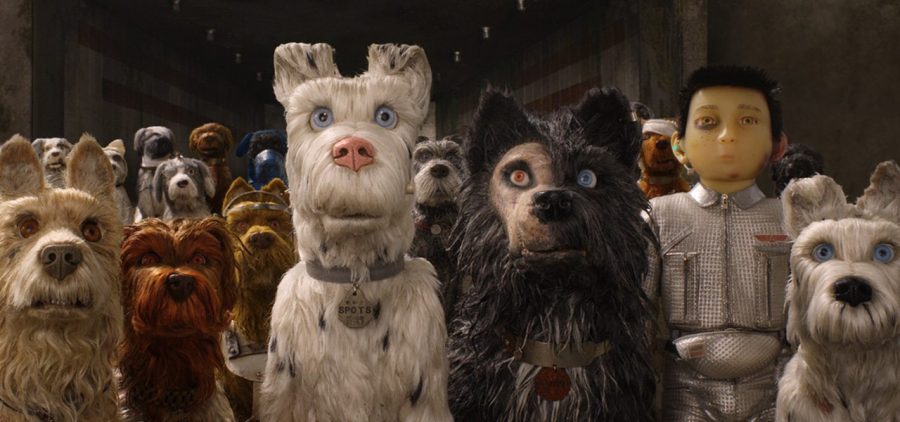Review: Wes Anderson’s ‘Isle of Dogs’ exceeds lofty expectations
April 30, 2018
Wes Anderson’s newest movie, Isle of Dogs, explores the simplicity of love in the futuristic city of Megasaki, Japan and today’s America through a heartwarming story, incredible technical elements, and a hilarious screenplay.
Isle of Dogs, the 10th film of Anderson’s career, tells the story of a 12-year-old boy attempting to find and rescue his dog after an outbreak of “dog flu” has sent all canines to Trash Island, an abandoned piece of land full of nothing but trash.
Similar to his other movies, this one takes on an almost childlike perspective of the world in that everything is done simply, perhaps suggesting the world is not as complicated as everyone believes.
Just when a problem arises that the audience thinks is unsolvable, Anderson solves it in the simplest way possible. When the audience wonders how Atari Kobayashi, the mayor’s ward whose dog has been sent away, will get to the island, he simply hijacks a plane at 12 years old. How else is he going to find his best friend? The concept of love fuels his motive to risk everything and just steal a plane.
In another instance, the question of how the dog flu will be cured is proposed. A sequence of tests in a high-tech, complicated science lab are shown, but immediately after each one, the scientist receives results saying things like, “Dog Flu: Cured,” and “Snout Fever: Treatable” and just like that, they have a solution. Anderson is trying to convey how much adults can overthink the problems they are faced with, when sometimes they are simply “treatable” with the help of love.
Anderson takes the audience into this world of fantasy where times are tough and man’s best friend has been exiled, but there is always hope around the corner. With the help of a high school newspaper and five dogs, some of them being domestic pets, others stray canines, Atari can eradicate hatred and replace it with love and equality (of cats and dogs, that is).
He also utilizes the character Chief, voiced by Bryan Cranston to show how love can change someone who can no longer put trust in anyone but his or herself. Chief is a stray dog who has never felt love from a human, therefore making him disrespect Atari. He eventually comes to know and trust the 12-year-old boy because Atari’s love overcomes the hatred Chief has previously experienced.
Anderson could have easily used this romanticizing of issues to simply avoid the problems of the world, but he uses it to spark a fire in audience members to make a change, something many directors could not have successfully done.
Aside from the story elements in Isle of Dogs, the technical elements are just as beautiful as those in Anderson’s previous films like Fantastic Mr. Fox and Moonrise Kingdom. He decided to make a movie that takes place on a literal island full of trash, yet still leaves the audience in awe of the beauty.
One scene takes place in a structure made out of old, glass bottles that in any other movie would look disgusting, but Anderson takes the mundane bottles and turns them into a stunning array of bright colors that accentuate the importance of the scene in which Atari is attempting to gain respect from his troop of helper dogs.
He also dedicates a whole minute of the movie to a segment of a chef making sushi. Completely in stop motion, each particle of rice is shown clearly and flawlessly. The chef slices squid, crabs, and raw fish, all looking artistic and extremely well-edited.
Along with the technical elements, the movie maintains Anderson’s renowned dry, witty humor. With jokes ranging from a psychic pug who really just understands TV to intermittent sneezing coming from all the infected dogs, the audience will be laughing the entire time – with the exception of the ones crying from the sad, yet heartwarming moments.
